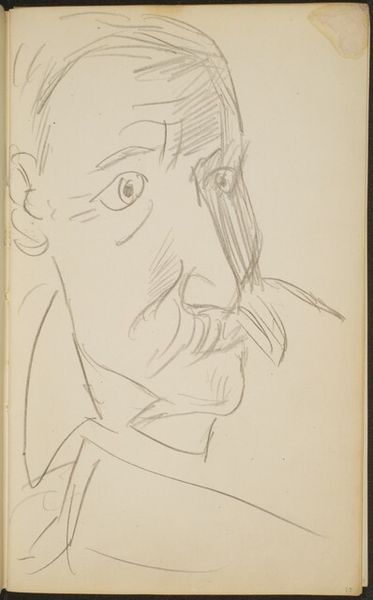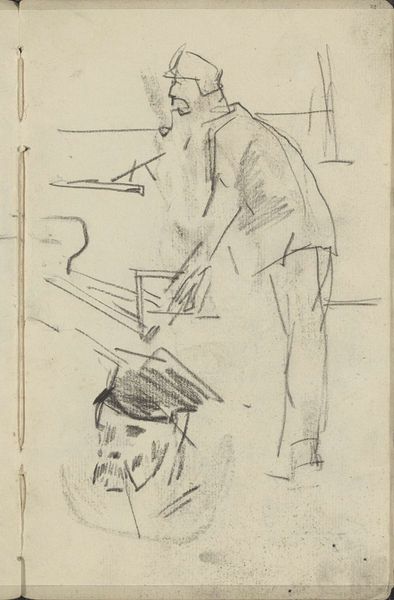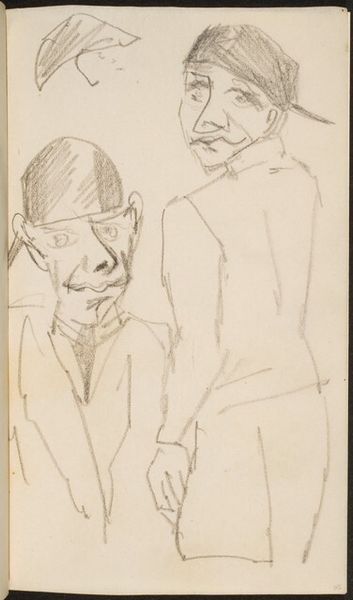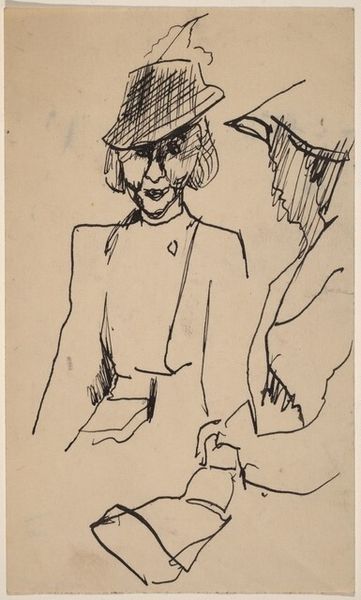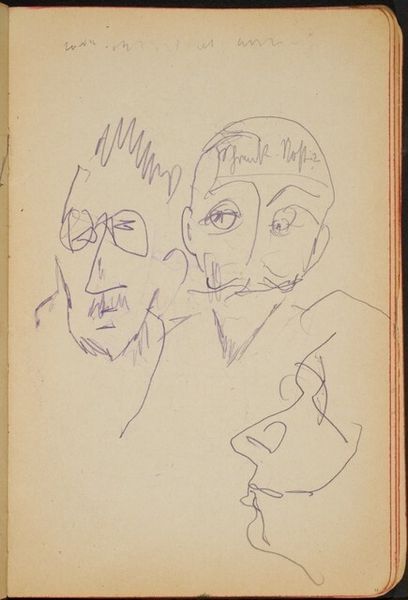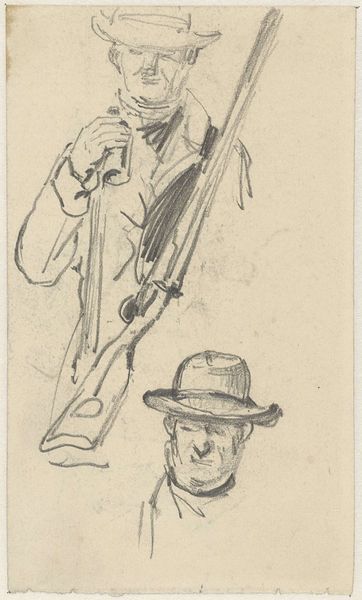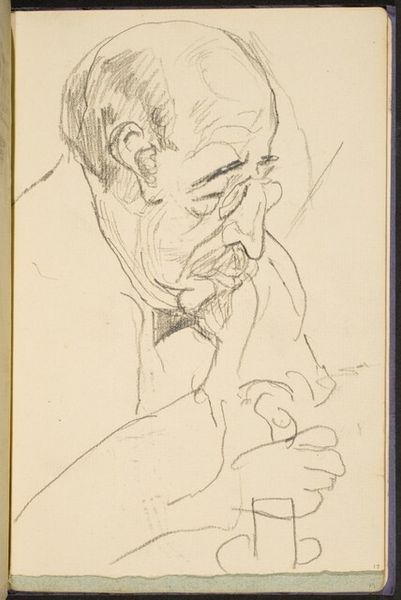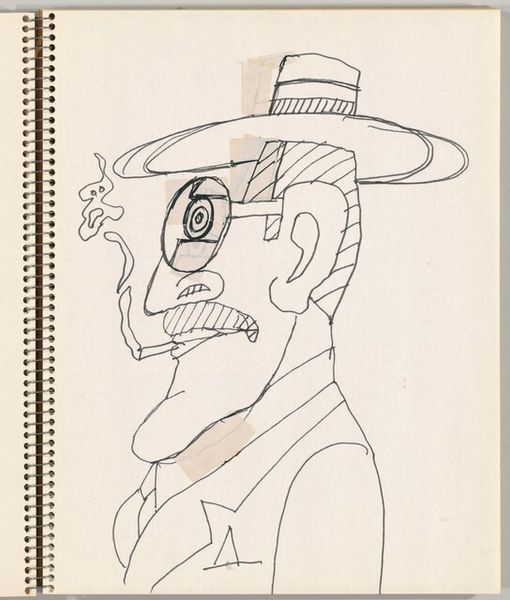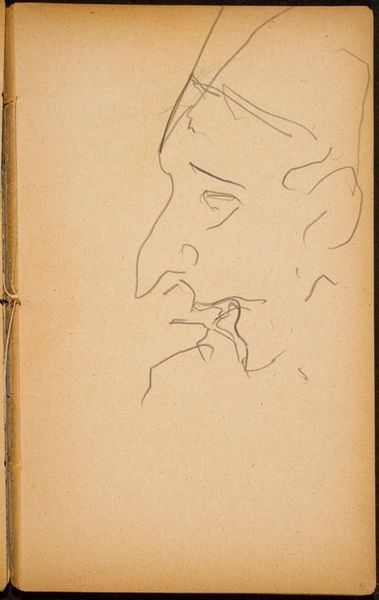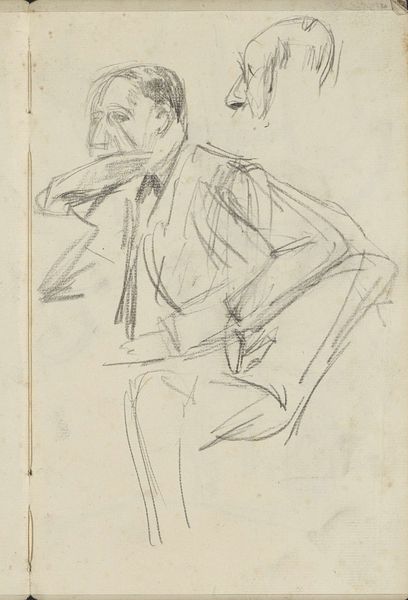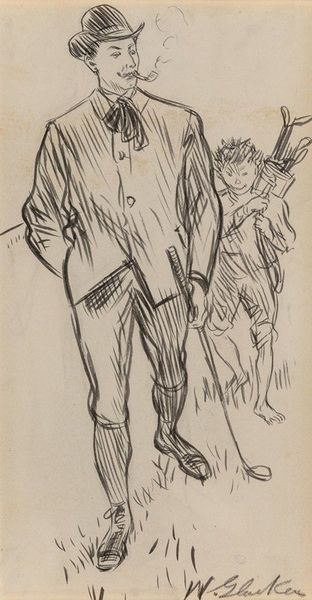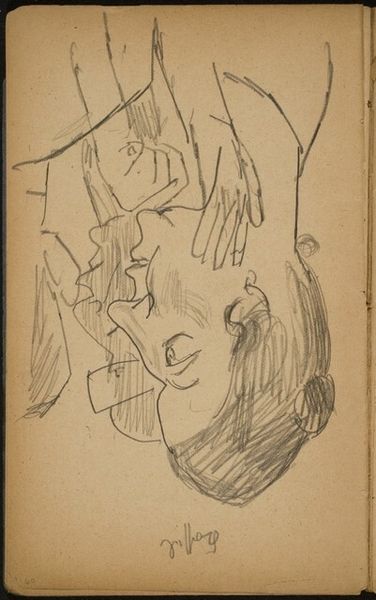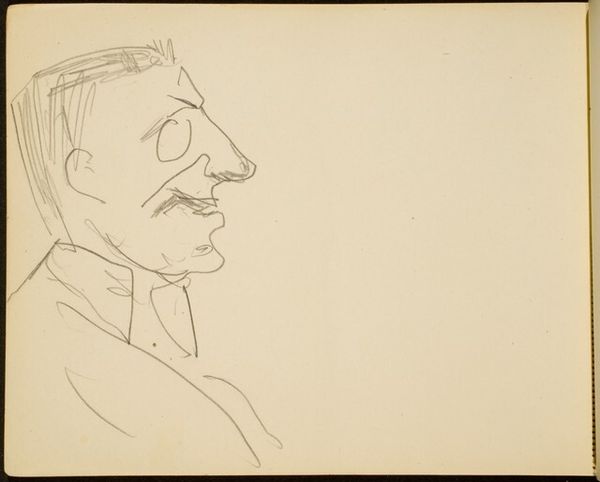![Zwei Frauen mit Hüten (Two Women with Hats) [p. 67] by Max Beckmann](/_next/image?url=https%3A%2F%2Fd2w8kbdekdi1gv.cloudfront.net%2FeyJidWNrZXQiOiAiYXJ0ZXJhLWltYWdlcy1idWNrZXQiLCAia2V5IjogImFydHdvcmtzLzVjMjUyZjkyLWY0MzAtNGNhMC04MTZhLTJmZmZmOTlmOTNlZC81YzI1MmY5Mi1mNDMwLTRjYTAtODE2YS0yZmZmZjk5ZjkzZWRfZnVsbC5qcGciLCAiZWRpdHMiOiB7InJlc2l6ZSI6IHsid2lkdGgiOiAxOTIwLCAiaGVpZ2h0IjogMTkyMCwgImZpdCI6ICJpbnNpZGUifX19&w=828&q=75)
drawing, pencil
#
portrait
#
drawing
#
ink drawing
#
figuration
#
pencil
#
expressionism
Dimensions: page size: 16.3 x 10 cm (6 7/16 x 3 15/16 in.)
Copyright: National Gallery of Art: CC0 1.0
Editor: Here we have Max Beckmann’s drawing "Zwei Frauen mit Hüten (Two Women with Hats)". It’s rendered in pencil and ink. I am really struck by how raw the emotions seem, the two figures so close and yet, perhaps, worlds apart. What's your interpretation of this work? Curator: Well, I see here a potent expression of Weimar-era anxieties surrounding gender and societal roles. Notice the hats. On the surface, fashionable. But consider how the symbol of the hat can also represent constructed identities, almost a performance of femininity dictated by societal pressures of that time. Editor: That’s interesting. So you're saying the drawing isn’t just a simple portrait, but a commentary? Curator: Exactly! Beckmann often used figuration to critique bourgeois society. Consider the line work: sharp, almost brutal. What does that suggest about the women’s position or perhaps Beckmann’s views? Is there tension in how one is looking directly at the viewer, while the other has a more composed gaze? What could this mean, at a time when women’s roles were actively renegotiated, yet constrained by cultural norms? Editor: I see your point. There's definitely a sense of unease that I missed at first. The direct gaze feels almost confrontational, in opposition to the downcast expression of the other woman. Curator: These stark contrasts are no accident. Beckmann lived through intense social and political upheaval. So, we must think about these visual cues as representative of the tight constraints experienced at that time, and also question the idea of modern womanhood. These weren't simple portraits of simple lives. Editor: This has changed my understanding quite a bit. I hadn’t considered how the hats could represent those types of identity issues, or even societal constraints, and now I look at the piece differently. Thank you. Curator: The power of art history is really in using these perspectives. I have a new outlook on these women myself.
Comments
No comments
Be the first to comment and join the conversation on the ultimate creative platform.
